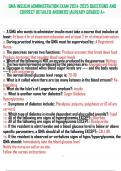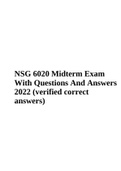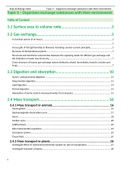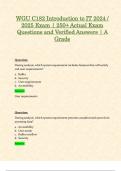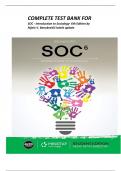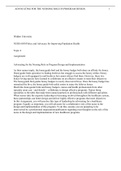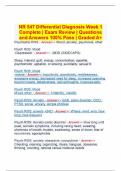Samenvatting
Persoonlijkheidspsychologie - Samenvatting [ENGELS] Toegepaste Psychologie Jaar 1 - Hanzehogeschool Groningen
- Vak
- Instelling
- Boek
Dit is een Engelse samenvatting voor het vak Persoonlijkheidspsychologie/Personality Psychology in jaar 1 van de opleiding Toegepaste Psychologie aan de Hanzehogeschool Groningen. In de samenvatting worden H1, H3 t/m H5, H8 t/m H11 en H13 t/m H18 behandeld. Eigen eindresultaat met deze samenvatt...
[Meer zien]





